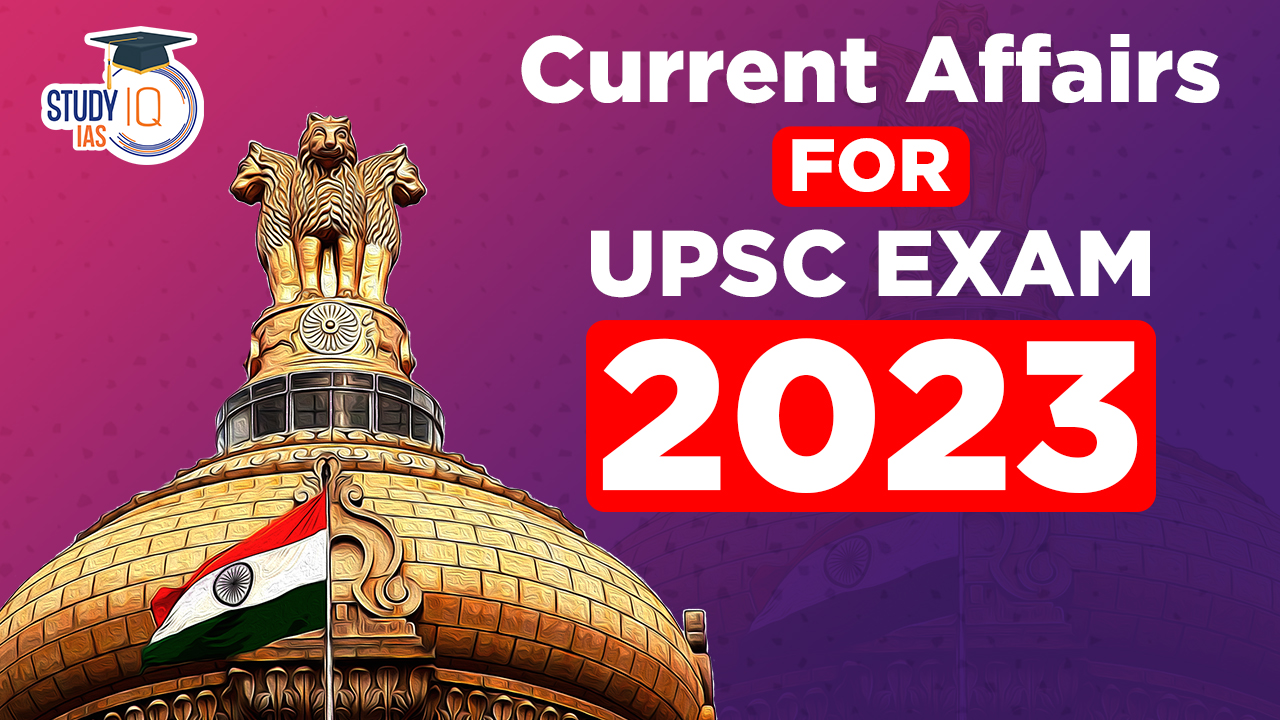Table of Contents
Indian Forest & Wood Certification Scheme
Context: The Ministry of Environment, Forests and Climate Change (MoEFC) has launched the Indian Forest & Wood Certification Scheme.
About Indian Forest And Wood Certification Scheme
The scheme is a nationally recognized forest certification program, aimed at fostering responsible management of forests and trees located outside traditional forest areas.
We’re now on WhatsApp. Click to Join
Key Aspects of the Program
- Approach: This program is based on voluntary, third-party certification, striving to enhance sustainable practices in forest management and agroforestry.
- Incentivization: The scheme aims to offer market-based incentives to various organizations, encouraging them to adopt and maintain responsible forest management and agroforestry practices.
- Types of Certification: The program includes certifications such as
- Forest Management Certificates,
- Trees outside Forest Management Certificate, and
- Chain of Custody Certification.
- Standards: The Forest Management certification adheres to the Indian Forest Management Standard, which was introduced earlier in the year.
Implementation Details
- Administrative Body: The Indian Institute of Forest Management (IIFM) in Bhopal is responsible for overall management of the Indian Forest and Wood Certification Scheme.
- About IIFM, Bhopal: This independent entity falls under the Ministry of Environment, Forest and Climate Change and focuses on education and training in Forest Management.
- Accreditation Guidelines: The Quality Council of India is responsible for accrediting the certification bodies.
- These bodies will evaluate whether various organizations meet the scheme’s standards.
- Quality Council of India: An independent organization established by the Ministry of Commerce and Industry, it functions as an accreditation authority, aiming to enhance quality standards across various sectors.
Importance of Forest Certification
- Consumer Assurance: Certification assures consumers that forest products, like timber, are sourced from responsibly managed forests or recycled materials.
- Discouraging Illegal Practices: It plays a role in deterring the use of materials from illegal sources.
- Comprehensive Benefits: The certification ensures that forestry activities contribute positively to environmental, social, and economic aspects.
Arsenic And Metal Removal By Indian Technology
Context: Recently, the Ministry of Jal Shakti highlighted the advancements made under the Jal Jeevan Mission, including the development of Arsenic and Metal Removal by Indian Technology (AMRIT).
AMRIT Technology: Overview
- Developed by: Indian Institute of Technology (IIT) – Madras
- Purpose: Designed to extract Arsenic and Metal ions from water.
- Functionality: Employs nano-sized iron oxy-hydroxide to selectively filter out arsenic during the water filtration process.
- Application: Suitable for use in both household and community settings.
- Endorsement: Recommended by the former ‘Standing Committee’ of the Department of Drinking Water and Sanitation as a leading technology for water and sanitation.
Facts about Arsenic
- Occurrence: Arsenic is a natural element found in the earth’s crust, commonly present in the environment across air, water, and soil.
- Toxicity: Its inorganic form is particularly toxic.
- Characteristics:
- Appearance: In its most stable form, it appears as a steel-grey, brittle solid.
- Conductivity: Exhibits low thermal and electrical conductivity.
- Classification: Although resembling metals in some ways, arsenic is primarily categorized as a nonmetal.
- Health Risks: Recognized for its toxicity, arsenic is a significant health risk. Chronic exposure to arsenic-contaminated water can lead to arsenicosis, potentially causing skin, bladder, kidney, or lung cancer, along with various skin diseases.
- Safety Standards:
- World Health Organization (WHO) Provisional Guideline: The recommended limit for arsenic in drinking water is 0.01 mg/l (10 μg/l).
- Indian Standard: In cases where no alternative source is available, the permissible arsenic limit in India is set at 0.05 mg/l (50 μg/l).
About Jal Jeevan Mission
- Initiation and Goal: Initiated in 2019, the mission’s primary goal is to provide safe and adequate drinking water to all rural households in India through individual household tap connections by 2024, in line with Sustainable Development Goal 6.
- Water Supply Target: The program aims to ensure the supply of 55 liters of water per person per day to every rural household via Functional Household Tap Connections (FHTC) by 2024.
- Urban Extension: The Government of India also introduced Jal Jeevan Mission (Urban) to extend water supply coverage to all 4,378 statutory towns in India through functional tap connections.
- Objectives of the Mission:
- Infrastructure Development: A key focus is on providing tap and sewer connections to households.
- Environmental Sustainability: The mission emphasises the rejuvenation of water bodies.
- Economic Efficiency: It aims to create a circular water economy, making the most efficient use of available water resources.
- Progress and Achievements
- Rural Reach: From a baseline of only 16.8% of rural households having tap water connections in August 2019, the coverage expanded to about 71.51% by December 2023.
- Addressing Contamination: All 378 habitations affected by arsenic that were pending tap water supply have been provided with safe drinking water through Community Water Purification Plants (CWPPs).
Kambalakonda Wildlife Sanctuary
Context: The inaugural Nature Interpretation Centre, a unique facility at the Eastern Ghats Biodiversity Centre, located on the outskirts of Kambalakonda Wildlife Sanctuary in Visakhapatnam, was recently opened.
About Kambalakonda Wildlife Sanctuary
- Situated in Andhra Pradesh, named after the local “Kambalakonda” hillock, serves as a vital green space for the residents of Vizianagaram.
- Bordered by Simhachalam hill range on the West and Gambheeram reservoir on the North-east.
- Geographical Features: The sanctuary is characterised by its hilly terrain with steep inclines.
- Vegetation Type: It is home to dry evergreen forests, a rare and endangered type of forest found only in Tamil Nadu and Andhra Pradesh in India.
- Terrain: Hilly with steep slopes Forest
- Flora: The sanctuary boasts a variety of plants, including species such as Teak, Thorny Bone-apple , Dhaman, Rosary Pea or Crab’s Eye.
- Notable among the floral species is the Indian screw tree. Additionally, the area is adorned with blossoms from the Bush plum tree and bunches of Jungle berries.
- Fauna: The fauna in the sanctuary includes mammals like Leopards, Barking Deer, and Jackals.
- The avian population features species such as the Paradise flycatcher, Tree pie, Quails, and Partridges.
- Russel’s viper or Daboia russelii (Rare snake)
The Eastern Ghats Nature Interpretation Centre (EG-NIC)
- It is a distinctive initiative situated within the Kambalakonda Wildlife Sanctuary in Visakhapatnam, Andhra Pradesh.
- This centre is designed to provide an engaging and educational journey through the varied ecosystems of the Eastern Ghats, which extend from Odisha to Tamil Nadu.
- Its objective is to raise awareness, impart knowledge, and foster a sense of stewardship among visitors regarding the abundant biodiversity found in the Eastern Ghats.
- The establishment of the centre represents a collaborative effort involving wildlife artists, illustrators, sculptors, architects, wildlife biologists, translators, and content developers.
Advocates Amendment Act 2023
Context: The Advocates (Amendment) Bill of 2023 was approved in the Rajya Sabha in August 2023 and subsequently passed in the Lok Sabha during the winter session.
Advocates Amendment Act 2023
- The bill’s primary goal is to eliminate intermediaries from the legal system.
- The Bill:
- Annuls the Legal Practitioners Act of 1879.
- Modifies the Advocates Act of 1961.
- These changes aim to reduce redundant laws in the statute books and to discard all outdated legislations, aligning with the government’s agenda to remove obsolete or pre-independence laws that are no longer relevant.
Key Elements of the Advocates (Amendment) Bill, 2023
- Identification of Touts: The bill enables High Courts, district judges, sessions judges, district magistrates, and revenue officers to create and publicise lists of touts.
- Restriction Measures: Courts or judges have the authority to ban individuals named in the tout lists from court premises.
- List Compilation Process: Empowered authorities can direct subordinate courts to investigate the activities of individuals suspected of being touts. Those confirmed as touts can be added to the list, provided they have had a chance to contest their inclusion.
- Consequences for Touts: Individuals identified as touts and included in the list face penalties if they continue acting as touts. These penalties include imprisonment of up to three months, a fine of up to Rs 500, or both.
| Aspect | Legal Practitioners Act, 1879 | Advocates Act, 1961 |
| Objective | To consolidate and amend laws relating to legal practitioners in select provinces. | To amend, consolidate, and unify laws relating to legal practitioners and establish Bar Councils and an All-India Bar. |
| Geographical Coverage | Applicable in regions like West Bengal, Uttar Pradesh, Punjab, Bihar, Madhya Pradesh, Assam, Orissa, and Delhi. Provision for extension to other states by their governments. | Nationwide application, replacing previous regional acts. |
| Definition of Legal Practitioner | Included advocates, vakils, or attorneys of any High Court. | Broadened and standardized the definition of legal practitioners across India. |
| Introduction of ‘Tout’ | Introduced the term “tout,” referring to individuals procuring legal employment in return for remuneration. | Continued the concept of ‘tout’ from the 1879 Act, with further legal implications and definitions. |
| Repeal and Retainment | – | Repealed most provisions of the 1879 Act but retained some elements related to its extent, definitions, and powers concerning touts. |
| Historical Context | Part of the colonial legal framework. | Enacted post-independence, influenced by recommendations from the Law Commission and the All-India Bar Committee. |
| Preceding Laws | — | Replaced the Legal Practitioners Act of 1879, the Bombay Pleaders Act of 1920, and the Indian Bar Councils Act of 1926. |
| Law Commission Report | – | The 249th Report of the Law Commission, titled ‘Obsolete Laws: Warranting Immediate Repeal,’ recommended the repeal of the 1879 Act. |
Budgett Frog
Context: Scientists at the Indian Institute of Science (IISc) have discovered that peptides from the skin of Budget frogs (called LL-TIL) can combat detrimental enzymes secreted by pathogens responsible for diseases.
About Budgett Frog
- Type of Species: A member of the horned frog family,
- Scientific Identification: Known scientifically as Lepidobatrachus laevis.
- Habitat: Indigenous to the Gran Chaco region in South America, covering parts of Bolivia, Paraguay, and Argentina.
- Conservation Status: Classified as ‘Least Concern’ by the IUCN.
- Physical Traits
- Female frogs are generally larger than their male counterparts.
- These frogs are mostly active at night, and they tend to stay submerged in water or mud during the day.
- In the dry season, they dig into the mud and form a protective cocoon around themselves, waiting for the rainy season to arrive.
- Cultural Relevance: Widely kept as pets in various countries due to their perceived intelligent behaviour.
VINBAX-2023
Context: The 4th edition of VINBAX-2023 to be held in Hanoi, Vietnam
About VINBAX-2023
- Type: Military Exercise
- Participatory: India and Vietnam
- Inaugurated: Exercise VINBAX, initiated in 2018 with its inaugural session held in Jabalpur, Madhya Pradesh,
- Objective: The primary aim of the exercise is to strengthen collaborative partnerships, enhance interoperability, and exchange best practices between the participating nations, in alignment with Chapter VII of the United Nations Charter regarding Peacekeeping Operations.
- Format and Focus: The exercise includes a Command Post Exercise combined with a Field Training Exercise. It emphasises the deployment and utilisation of an Engineer Company and a Medical Team.
- Key Activities: Participants will share and discuss contemporary techniques for the construction of roads, culverts, helipads, ammunition shelters, and observation posts in operational zones.


 Monasteries in India: List of Major and ...
Monasteries in India: List of Major and ...
 National Doctor’s Day 2025: History, T...
National Doctor’s Day 2025: History, T...
 Bonalu Festival 2025: Date, History, Rit...
Bonalu Festival 2025: Date, History, Rit...





















